How Disney Became One of the Largest Transit Agencies in North America
What Does a Theme Park Operating the 10th Largest Transit Agency in the U.S. Say About Us?
Disney World, the “happiest place on Earth,” was conceived and built on swampland in Central Florida over 60 years ago. Today, it spans 43 square miles—larger than Paris and more than three times the size of Jersey City. Feeling the constraints of Southern California’s rapid urbanization, Walt Disney realized that Disneyland’s 500 acres wouldn’t be enough to fulfill his vision. Additionally, Disneyland primarily catered to locals, with only 5% of guests coming from east of the Mississippi, where 75% of the U.S. population lived at the time.
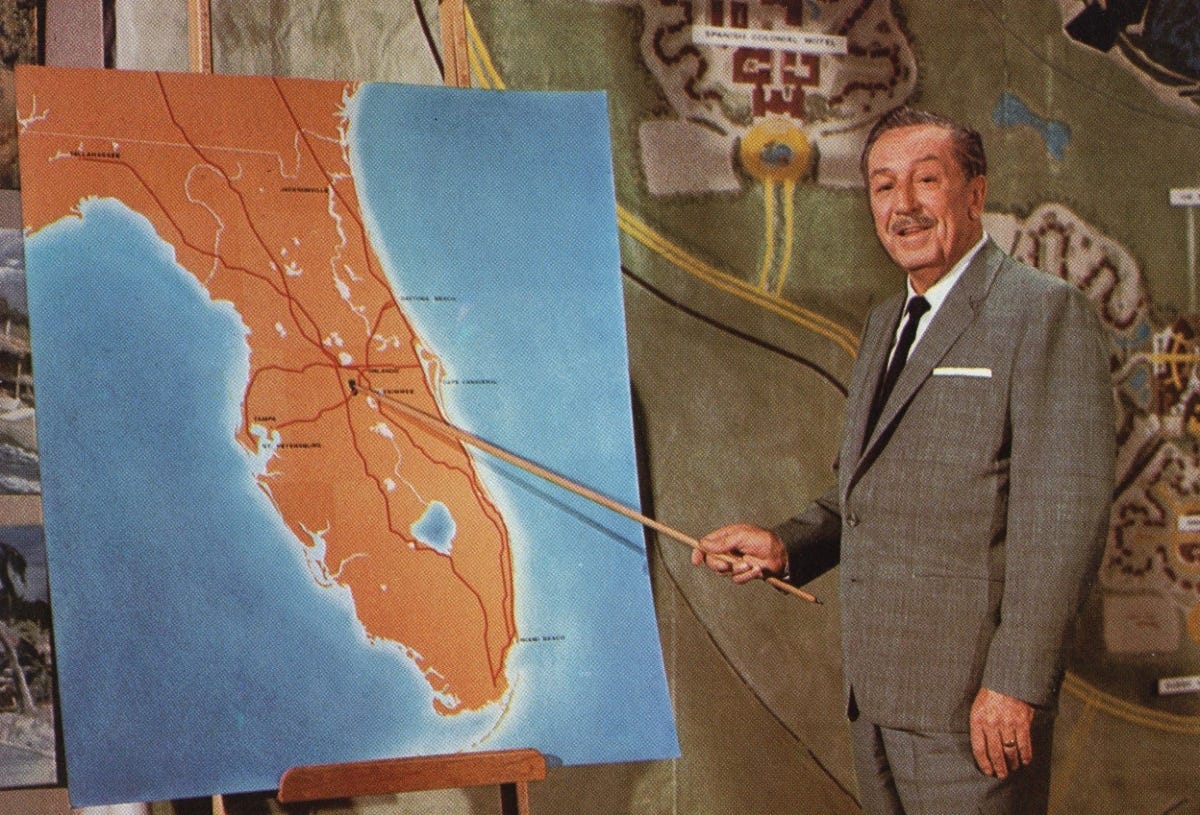
When Disney World opened in 1971, it featured just one theme park—Magic Kingdom. Today, the resort has four theme parks, 27 themed resort hotels, 9 non-Disney hotels, a camping resort, conference centers, a shopping district, and two water parks. However, Walt Disney never lived to see its opening—he passed away in 1966, five years before Disney World welcomed its first guests.
Project Florida
The current iteration of Disney World is a far cry from “Project Florida”, Walt’s original vision for the resort. His ambitious plan included a theme park, an airport, an industrial park, and a meticulously designed planned radial city called the Experimental Prototype Community of Tomorrow (EPCOT).
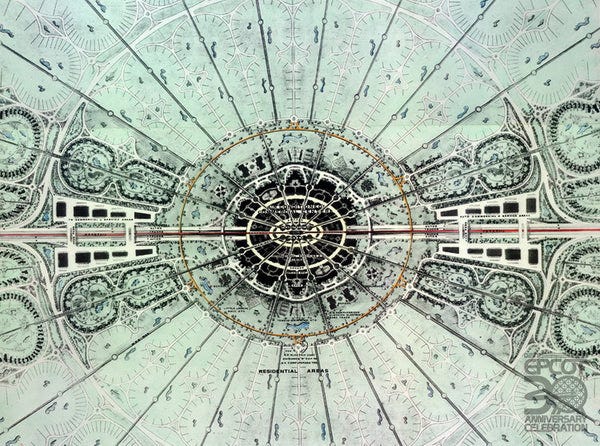
Unlike most urban planners and policymakers of his time, Walt believed that American car dependency was excessive. He wanted to create an environment where “the pedestrian will be king, free to walk without fear of motorized vehicles.” Cars wouldn’t be banned entirely, but they would be out of sight and out of mind—making way for better, rapid transit options and improved walkability.
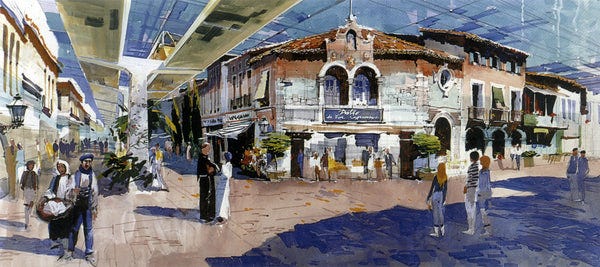
The Monorail
A core piece of Walt Disney’s original vision was a “high-speed rapid transit system”—the monorail. After its success in Disneyland, Walt planned to expand the system in Florida, making it the backbone of transportation for both visitors and residents of EPCOT.
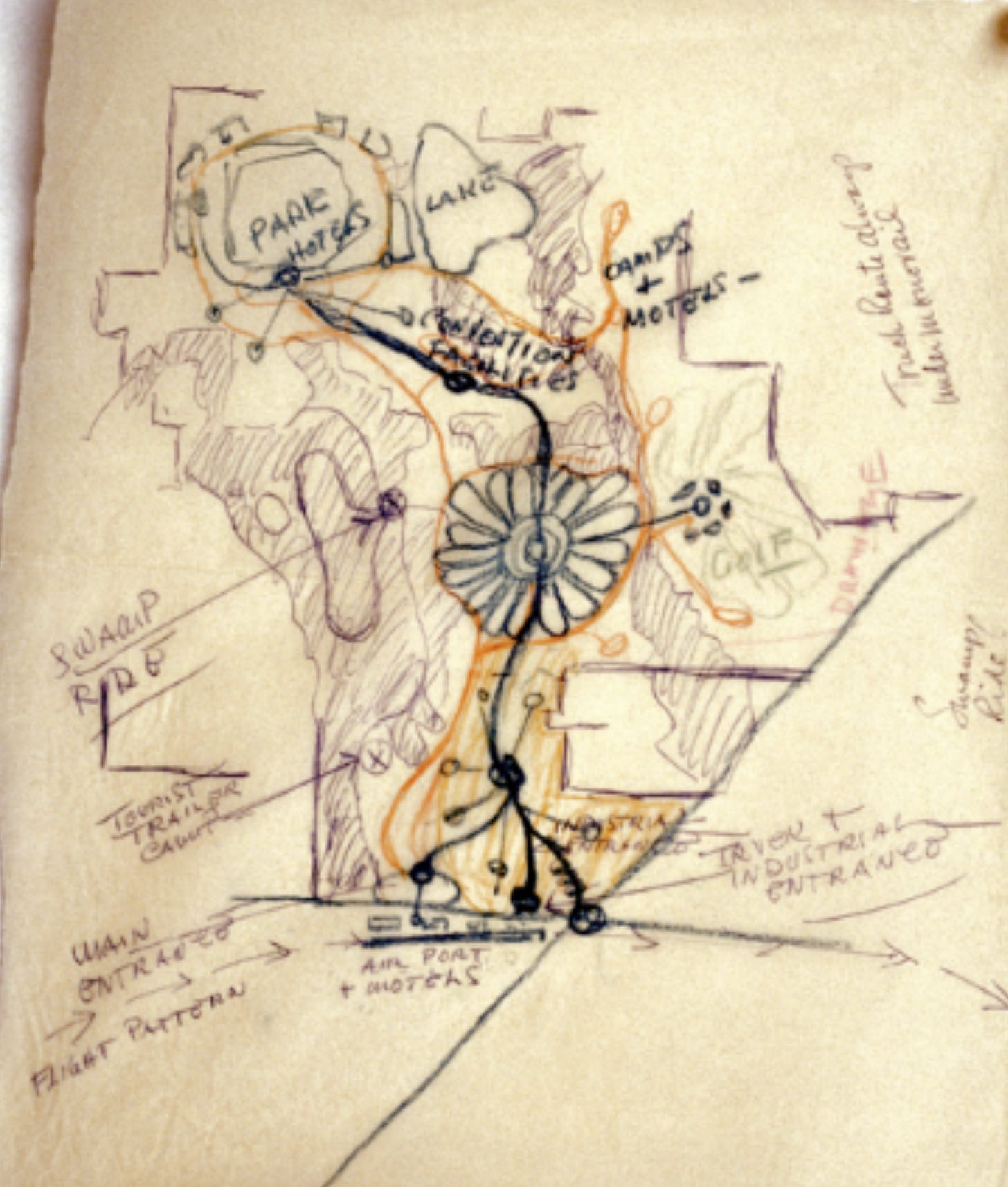
Just like great urban transit networks, the monorail would serve as a fast, direct connection throughout the resort, linking to local last-mile connections across the property.
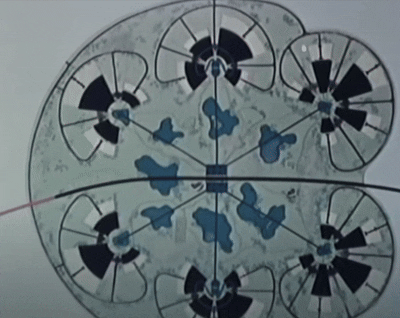
Though Walt’s dream of EPCOT as a functional city died with him, the monorail system still opened with Disney World in 1971. It initially opened with the Express and Resort routes, with a third line added in 1982 to connect to the new EPCOT theme park.
Today, the system consists of 12 Mark VI trains, manufactured by Bombardier, each capable of holding up to 360 people. Trains run every 4 to 7 minutes and serve 150,000 daily riders—a number equivalent to the combined light rail ridership of Boston and Philadelphia.
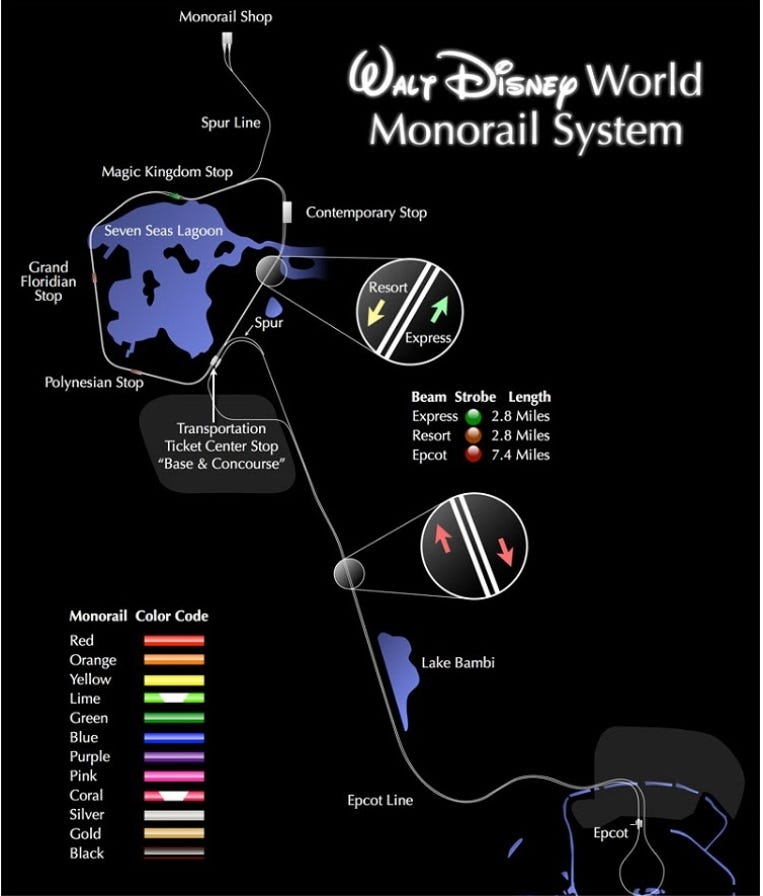
However, after more than 50 years of operation, the trains and infrastructure are aging. The current fleet, introduced in 1989, is still in operation. Expanding the system is cost-prohibitive, especially given that monorail technology has not advanced significantly in the U.S. for decades.
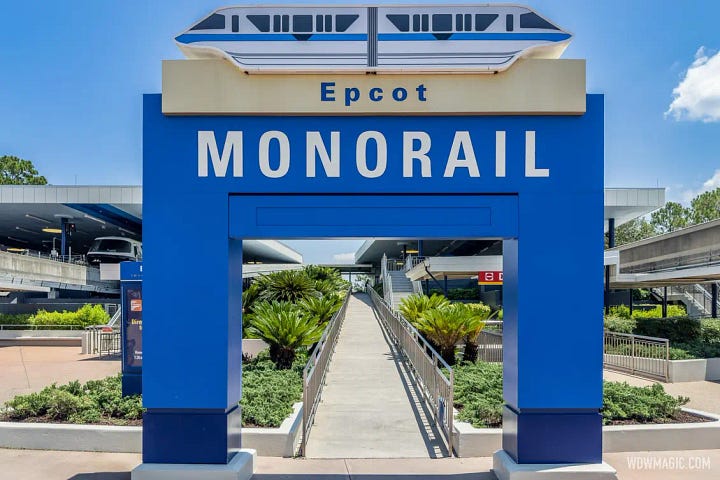
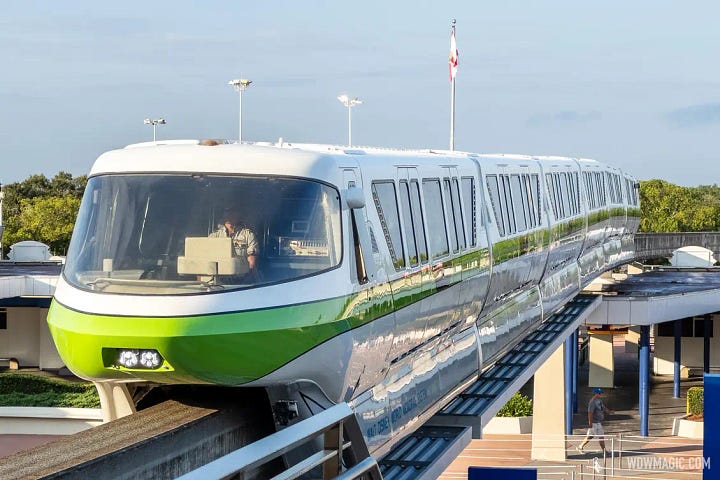
More images of the monorail system from WDW Magic
Instead, Disney has turned to a different aerial transportation solution for expansion: the Skyliner.
The Skyliner
In addition to the monorail, Disney World introduced the Skyliner in 2019, a gondola lift system that serves as the resort’s second aerial transit network. Similar to the Disneyland Skyway, which operated from 1956 to 1994, the Skyliner provides aerial transportation across key areas of the resort.
The system consists of three routes spanning a total of three miles, with five stations strategically placed to serve major hotels and theme parks. Remarkably, the Skyliner was built in just two years and has a capacity of 4,500 guests per hour—a far more cost-effective solution than expanding the monorail.
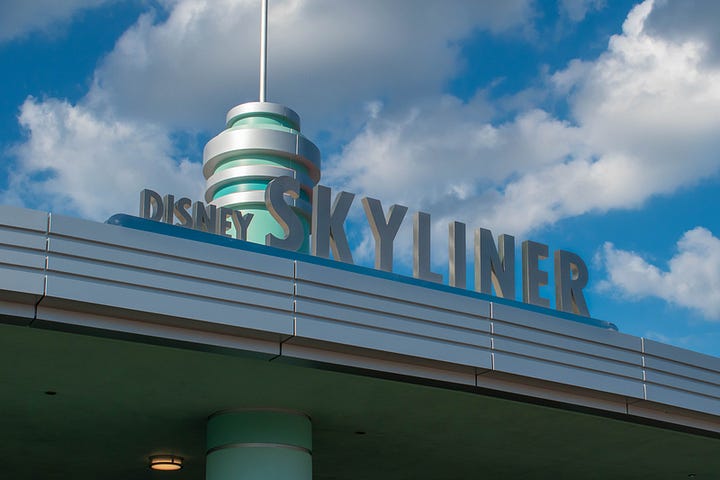
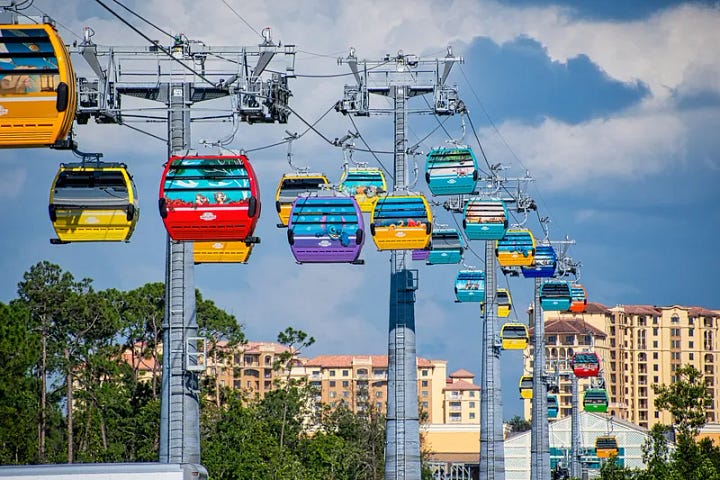
More images of the skyliner system from Park Prodigy
Estimates suggest that constructing such a gondola system costs around $12 million per mile, making it relatively affordable to expand across the resort. However, its linear right-of-way requirement limits its flexibility compared to other forms of transit.
Ferries
Given that Disney World was built on a literal swamp, the resort features numerous retention ponds and bodies of water. This made the decision to introduce water ferries a natural and practical choice.
Today, Disney operates 38 watercraft of various sizes and functions, covering 10 routes with 24 stops across the resort. The largest ferry service connects Magic Kingdom to the Transportation & Ticket Center (TTC)—the resort’s largest transit hub. These ferries can accommodate up to 600 passengers and operate at frequencies of every 10 to 20 minutes.
Fun Fact: Disney World operates the largest ferry fleet in the United States, surpassing any public ferry transit system in the country.
The Bus System
It cannot be overstated—the Disney World bus system is massive. The resort’s bus fleet is 64% larger than Orlando’s metro bus system and twice the size of Rhode Island’s. If not for Miami, it would be the largest bus system in Florida.
To put this in perspective:
With over 58 million annual visitors, four theme parks, two water parks, 27 hotels, conference centers, and shopping districts, buses form the backbone of Disney’s transit network. Unlike most cities, where transit hubs are centralized, Disney prioritizes one-seat rides—allowing guests to travel directly from their hotel to each theme park without transferring. Once at a theme park, they can take a direct bus to another park.
Take Animal Kingdom, for example. Like the other three theme parks, it has over 30 bus gates connecting it to every other park and hotel. In certain areas, the Skyliner and ferry services have replaced some bus routes, but the system remains Disney’s most extensive mode of transportation.
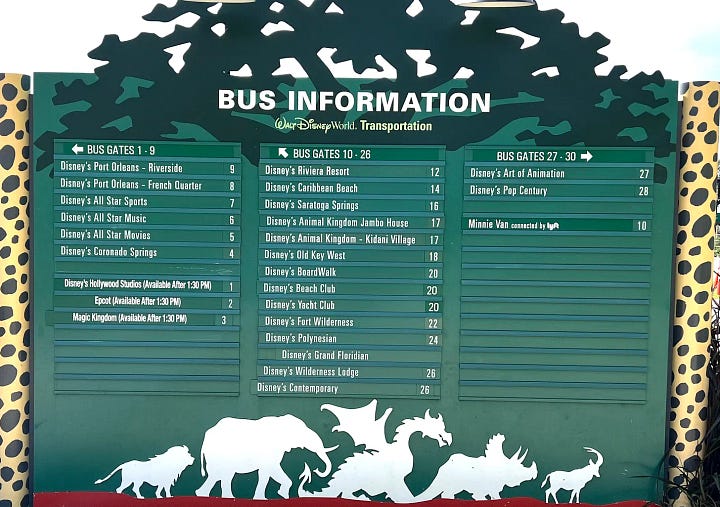

Touring Plan Images here
How big is the bus system?
Unlike public transit agencies, Disney does not disclose ridership data, routes, operational statistics, or GTFS data. However, based on estimates from available data and my own research, I estimate:
Disney World operates between 95 and 110 bus routes (my guesstimate)
Buses run every 20 to 30 minutes
12,000 daily bus trips move guests across the resort
For context, Orlando’s entire metro transit system sees just 20% of Disney’s annual ridership. To accommodate this demand, Disney built a dedicated busway to relieve congestion. It may be the only public transit busway in both the state and the region.
The One-Seat Ride vs. Efficiency Debate
With such an extensive point-to-point network, Disney’s bus system is far less efficient than a traditional transit model. However, Disney prioritizes guest experience over operational efficiency—because most visitors prefer a less frequent direct bus over a frequent one that requires a transfer.
Here’s an example:
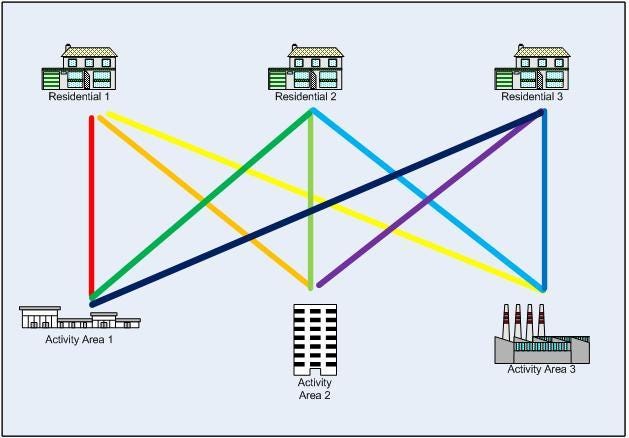
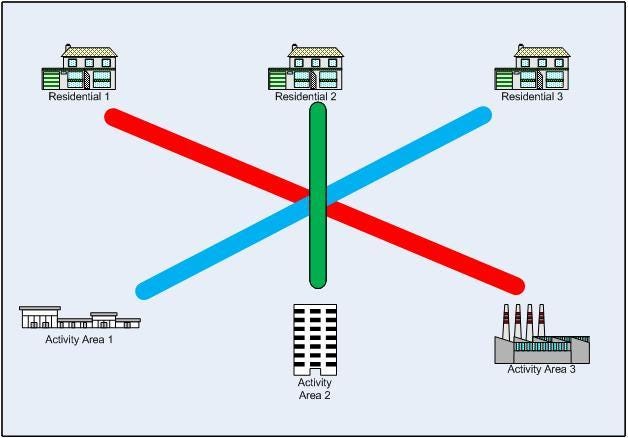
So let’s use the example of Disney having 27 themed hotels and four theme parks. If each hotel has a direct bus to each park, that results in 108 separate routes. Now, imagine a system where buses connect to a central transfer hub—this would reduce the number of routes to 31 while increasing bus frequency by 3.5x on each route.
In a traditional transit system, agencies design routes to maximize efficiency and minimize redundancy. But Disney’s system is designed to maximize convenience and keep guests inside the resort longer.
You can’t leave!
From the beginning, Walt Disney’s vision was to create a space where cars would not dominate. Later, Michael Eisner (Disney CEO from 1984 to 2005) reinforced this by ensuring that guests wouldn’t need—or want—to leave the resort.
A rental car means freedom to leave and spend money elsewhere.
A free and extensive bus network means guests stay inside the resort.
This strategy has worked incredibly well.
Estimates show that in 2023, Disney World’s bus system moved over 55.2 million people, making it the 11th largest transit system in the U.S.—larger than Denver’s or Las Vegas’s entire transit networks.
What does this mean for America?
Estimates suggest that in 2023, Disney World’s bus system transported over 55.2 million passengers, making it the 11th largest bus system in the U.S.—larger than the entire transit networks of Denver or Las Vegas.
This raises an uncomfortable question: is it a poor reflection on the United States that a theme park moves more people than major metropolitan transit systems?
Cities like Atlanta, Houston, San Diego, Las Vegas, and the Twin Cities all have lower transit ridership than Disney World. Even Orlando’s entire metro area sees only one-fifth of Disney’s transit ridership— 20%!
It is undeniable that Disney World operates the largest private transit system in the world. But when we think of the "happiest place on Earth" and Walt Disney’s original vision for an experimental city, we have to wonder:
Could America have embraced walkable cities and robust transit systems if we had followed Walt Disney’s vision instead of Robert Moses’s?
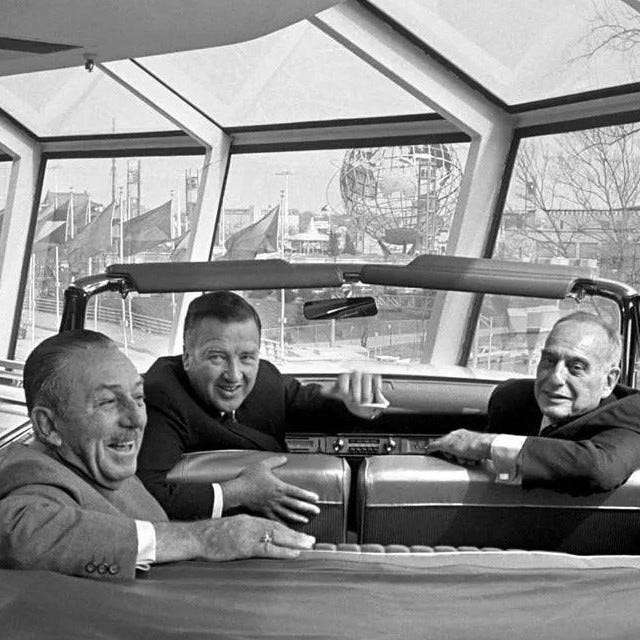
(Thumbnail image from Joseph Preziosi/Anadolu Agency, Getty Images)




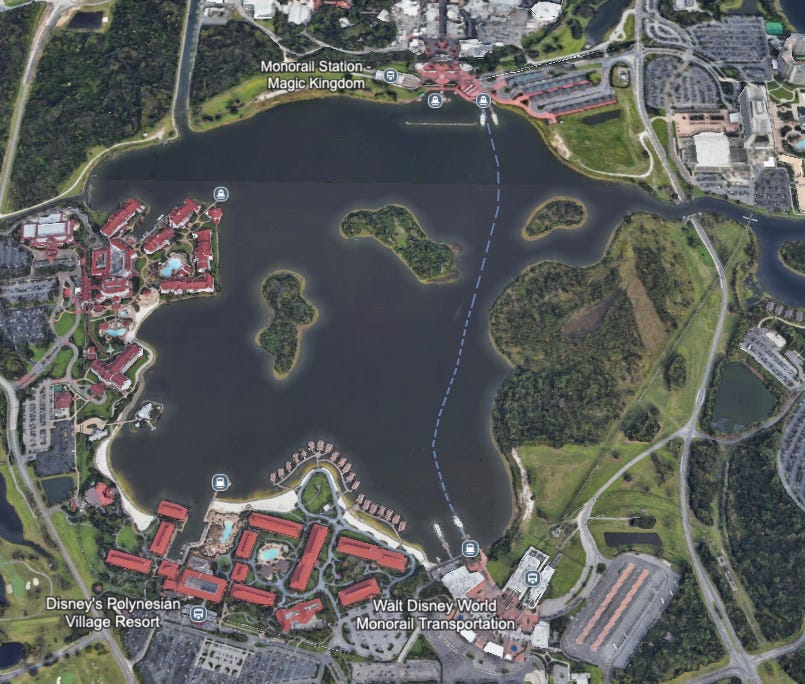
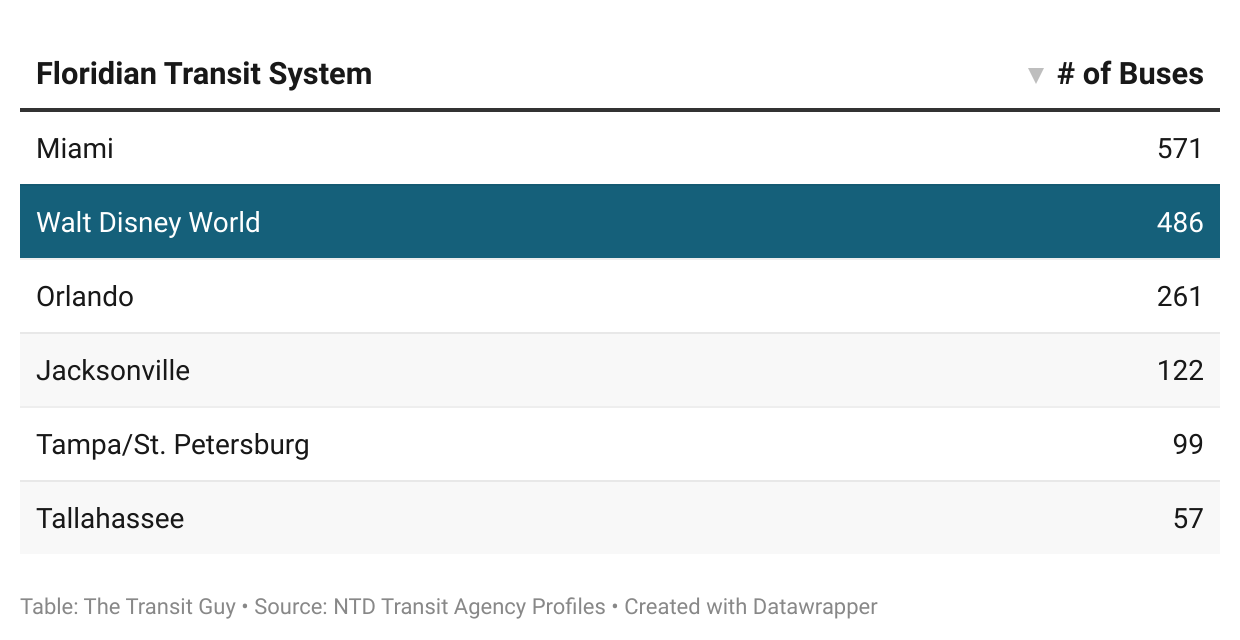
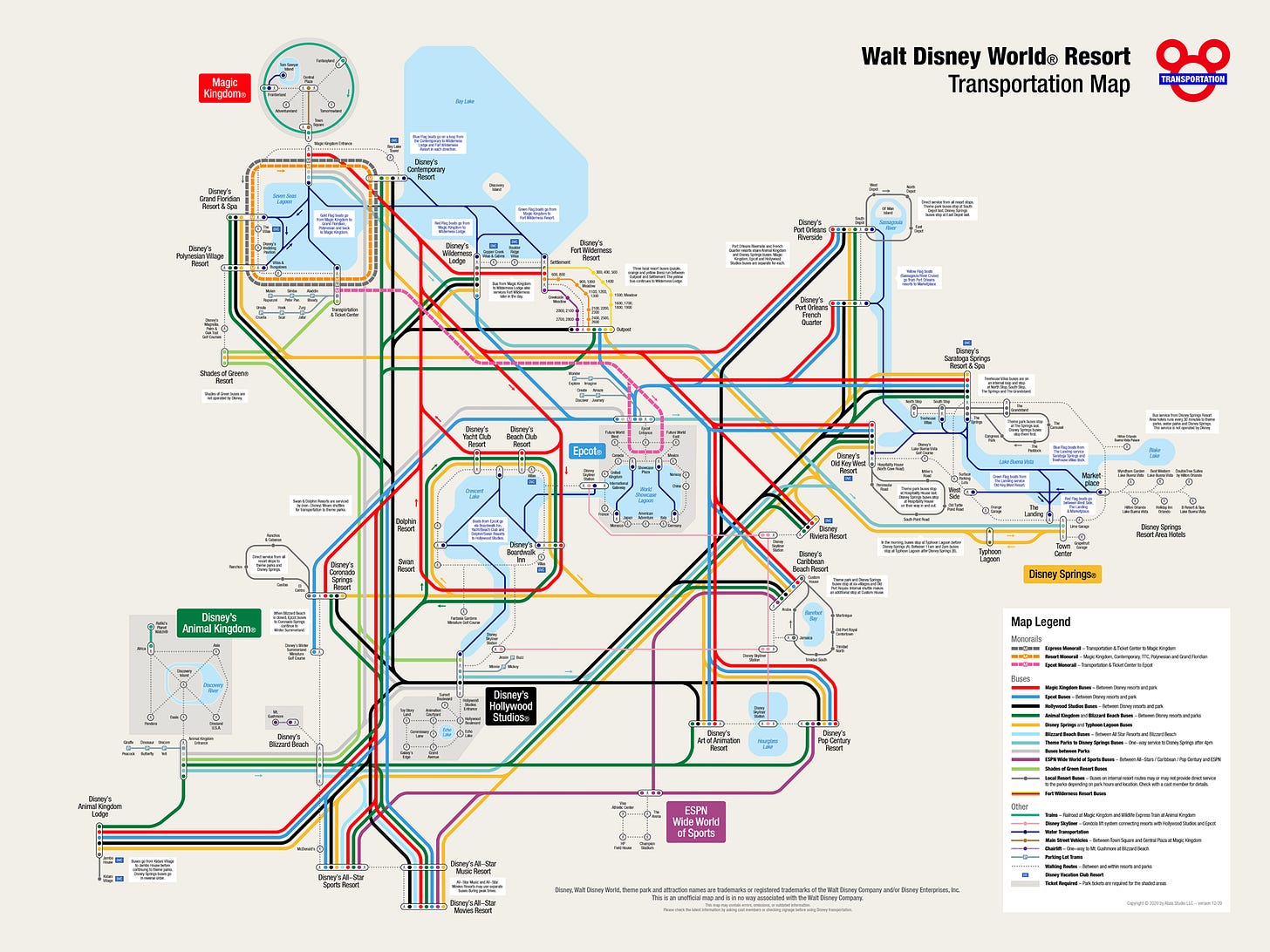
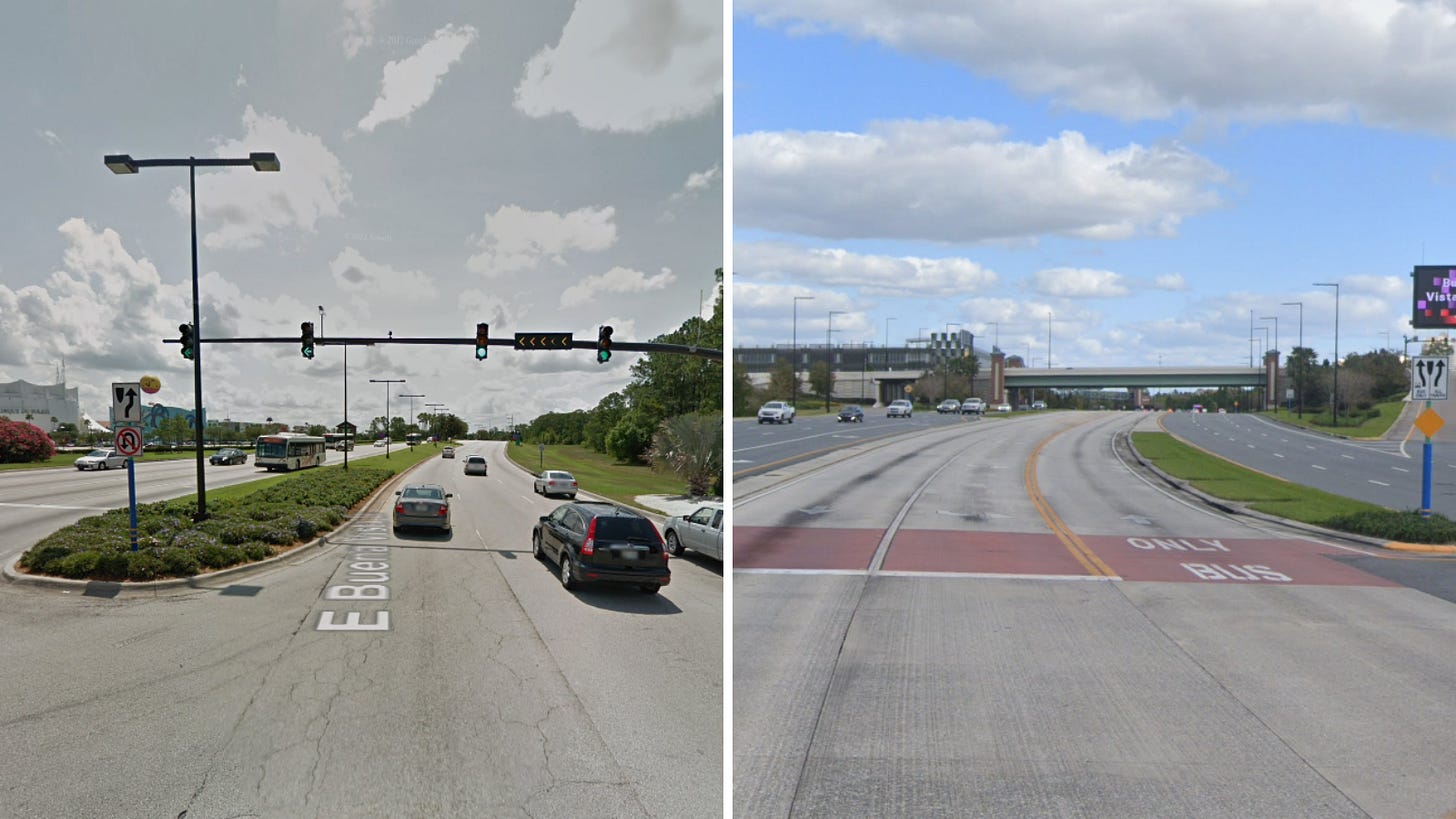
One reason why Disney is able to run such an efficient transit system is that it has a huge number of visitors in a small geographic area of just a few miles. By contrast, real public transit systems that get similar annual ridership as Disney cover much larger areas, and, as a result, incur much higher costs to move similar numbers of people.
In the case of Disney, the big tradeoff for having a small geographical area is that its transit service doesn't actually reach the Orlando airport, where most of the guests are coming from. Instead, a Google search for "how to get to disney world from airport" says to either rent a car, take Uber, or ride the real public transit. And, for guests that arrive from places within driving distances, Disney takes the approach of building huge parking garages at its resorts, rather than stretching its transit system thin to get closer to where people are actually coming from.
If real public transit agencies were run like Disney World, I think the analogy would be concentrate an entire city's transit resources on just a couple of square miles near downtown, build huge parking garages at the edge of the downtown with direct access to the transit system, and expect everyone to drive a car or pay for an Uber to go to or from anywhere else. For Disney, this approaches makes a lot of sense - like the article says, the aim is to make it easy and convenient to travel within the resort, not easy and convenient to leave. But, you couldn't get away with trying to run a big-city public transit system like that.